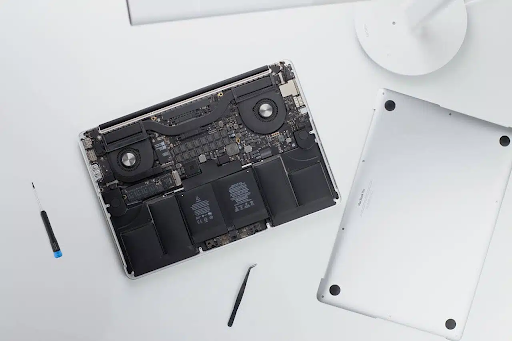
Carbon capture technology has emerged as a pivotal weapon against global warming in an age that increasingly prioritizes sustainability. But for businesses to attain maximum efficiency while protecting the integrity of their operations, more than modern equipment alone may be required for success. They also require sophisticated and adaptable software.
Hybrid mobile apps can bridge this gap by giving carbon capture companies a fast and efficient method of tracking procedures, engaging stakeholders, and guaranteeing continuous improvement. In addition, when they work with a trusted hybrid design firm, they will gain access to the full potential of controlling data and the customer experience.
Understanding Carbon Capture and Its Challenges
The Basics of Carbon Capture
Carbon capture companies design and install systems that remove CO2 emissions from industrial processes and directly from the atmosphere. Through the capture of greenhouse gases right where they originate These systems stop millions of tons of CO₂ from escaping the environment every year. Yet, managing these intricate methods requires continuous monitoring of the system in real-time, precise data analysis, and smooth communication between teams that are dispersed.
Operational Complexities
Carbon capture businesses have to face difficulties in maintaining their equipment, complying with regulatory requirements, and reporting to stakeholders. They must manage field analysts, lab technicians, executive directors, and corporate managers, as well as field technicians, to ensure their operations are in line with strict regulations regarding the environment. This is the reason why the requirement to have a single system of software cannot be greater.
Why Mobile Applications Matter in Carbon Capture
Real-Time Data at Your Fingertips
In the first place, mobile applications provide groups with immediate access to vital information. Field engineers are able to view the readings of pressure as well as gas concentrations and information about their equipment right from their mobile devices, which reduces the time it takes to respond to any anomalies. In addition, laboratory analysts can download test results in real time, making sure that those making decisions have current information.
Enhanced Collaboration
Furthermore, mobile apps foster collaboration across departments. Through a central platform, all users, including plant managers and sustainability professionals, can exchange information, raise alerts, and monitor progress without delay. This unified system streamlines processes and removes the hassle of email chains that are traditional or paper-based reports.
The Rise of Hybrid Mobile Applications
Defining Hybrid Apps
Hybrid mobile apps combine the best of native and web technology. They are built using frameworks such as Ionic, React Native, or Flutter that wrap an online view within the native containers. Therefore, developers are able to develop a single, unified codebase that can be used on iOS as well as Android devices, thus reducing the amount of time needed to develop and also maintenance costs.
Advantages Over Native and Web-Only Solutions
As opposed to pure native apps, the hybrid solution offers quicker time-to-market. They also outperform browser-only apps using the capabilities of devices, such as GPS and offline storage, without compromising the cross-platform compatibility. They are therefore an ideal combination for carbon capture firms looking for reliable, flexible applications.
Key Benefits for Carbon Capture Companies
Streamlined Data Collection and Reporting
Automating Field Data entry.
Hybrid apps allow technicians to enter measurement data directly onto standard digital forms. Furthermore, integrated validation procedures reduce mistakes while ensuring consistent data. In turn, businesses have accurate records to ensure compliance audits as well as the tracking of performance.
Real-Time Reporting Dashboards
Additionally, hybrid apps create live dashboards that are updated as soon as new information is available. Sustainability officers, for instance, get instant notification in the event that the CO₂ capture rate falls below expected thresholds. Thus, they can respond promptly to address problems and avoid expensive interruptions.
Cost Efficiency and Rapid Iteration
Reduced Development Costs
Through working together with a hybrid firm for app development, carbon capture companies can avoid the cost of having distinct native teams. A single team will be able to tackle all platforms at once, which can cut expenses for labor by around 40 percent. Additionally, bugs and updates will be available across every device at the same time.
Faster Feature Rollouts
In addition, the hybrid apps make it easier to deploy new features. Teams are able to push out new policies or features immediately and without having to wait for approval from multiple stores. In the end, businesses remain in compliance with ever-changing laws and constantly improve users’ experience.
Enhancing Stakeholder Engagement
Interactive Client Portals
Hybrid mobile software allows companies that use carbon capture to provide customized portals to clients as well as investors. The portals provide project milestones as well as capture metrics and reports on environmental impacts with an easy-to-read design. In the end, those who use them have confidence in the firm’s technology and transparency.
Community and Public Outreach
Additionally, apps can host educational programs that show the local community the process of carbon capture as well as its benefits for the environment. In engaging with the public directly, they gain trust and build willpower for the next initiatives. These outreach efforts differentiate top firms in an increasingly competitive environmental landscape.
Ensuring Regulatory Compliance
Built-In Audit Trails
Regulators require precise records on greenhouse gas emissions as well as collected quantities. Hybrid apps are able to automatically track every entry of data and action, thereby creating an unalterable audit trace. Thus, carbon capture firms are able to demonstrate their compliance at audits.
Automated Reporting to Authorities
Additionally, hybrid systems enable the production of standardized reports, including PDFs, CSVs, and XML files, customized to adhere to specific regulations. Through automation, companies can eliminate manual labor and decrease the chance of penalties for not complying.
Real-World Case Studies
GreenCarbon Solutions’ Field App
GreenCarbon Solutions partnered with a prominent hybrid application development firm to create an application for fieldwork that is cross-platform. This application reduced the number of error-prone data entries by 60 percent and cut report production duration from days to just a few hours. As a result, GreenCarbon met tight regulatory deadlines as well as improved transparency of operations.
AtmosClear’s Stakeholder Hub
Similar to this, AtmosClear created a mobile-friendly stakeholder interaction portal. Utilizing hybrid technologies and various other technologies, the company provided enhanced user experiences at 30 percent less cost than a native counterpart. In the end, investors’ score satisfaction rose to 25%, making it possible for quicker capital raises for new ventures.
Best Practices for Developing Hybrid Apps in Carbon Capture
1. Prioritize Performance
Although hybrid frameworks have benefited significantly, tuning performance is crucial. Thus, it is important to make sure to optimize API calls, save data locally, and reduce the need for animations.
2. Leverage Device Capabilities
Make use of the native capabilities such as GPS, camera, and push notifications to enhance your capabilities. For example, technicians could scan QR codes onto devices to access records of maintenance immediately.
3. Maintain Strong Security
Due to the delicate nature of environmental information, it is recommended to use end-to-end encryption as well as secured authentication. Furthermore, only work with a reliable hybrid application development firm that adheres to OWASP Mobile Top 10 guidelines.
4. Plan for Offline Operation
Carbon capture sites typically have poor connectivity. So, you must ensure that the application smoothly transitions to offline mode and caches information until it is able to sync and connect to the web server.
Future Trends
Integrating AI-Driven Insights
In the future, in the future, in the future, hybrid apps are expected to incorporate AI tools that can anticipate equipment breakdowns and optimize the parameters of capture. By analyzing historical data, the hybrid apps can recommend routine maintenance programs, which will reduce repair time and operating costs.
Expanding IoT Connectivity
In addition, the Internet of Things (IoT) can connect valves and sensors directly to the hybrid apps. This capability means that engineers are able to adjust the rate of capture at any time, increasing effectiveness and making sure that they are in compliance with environmental regulations.
Conclusion
Hybrid mobile apps offer carbon capture firms a dependable and cost-effective way to simplify processes, increase stakeholder involvement, and ensure compliance with regulatory requirements. When working with a trusted hybrid developer and a partner, companies can quickly implement cross-platform solutions that harness live data in real time and sophisticated features that promote sustainable development. When AI as well as IoT capabilities grow and become more advanced, hybrid apps will be a key component in the worldwide effort to combat global warming, turning carbon capture from an intriguing technology to a crucial solution.





